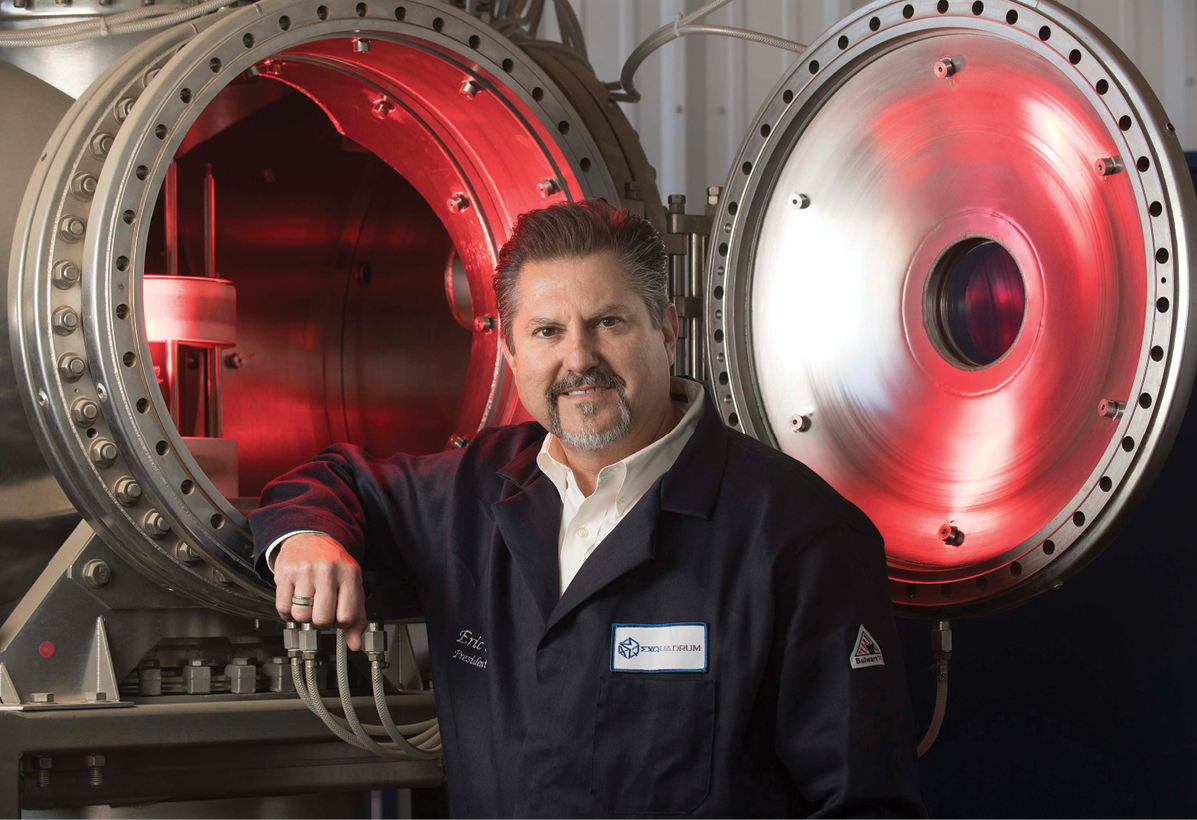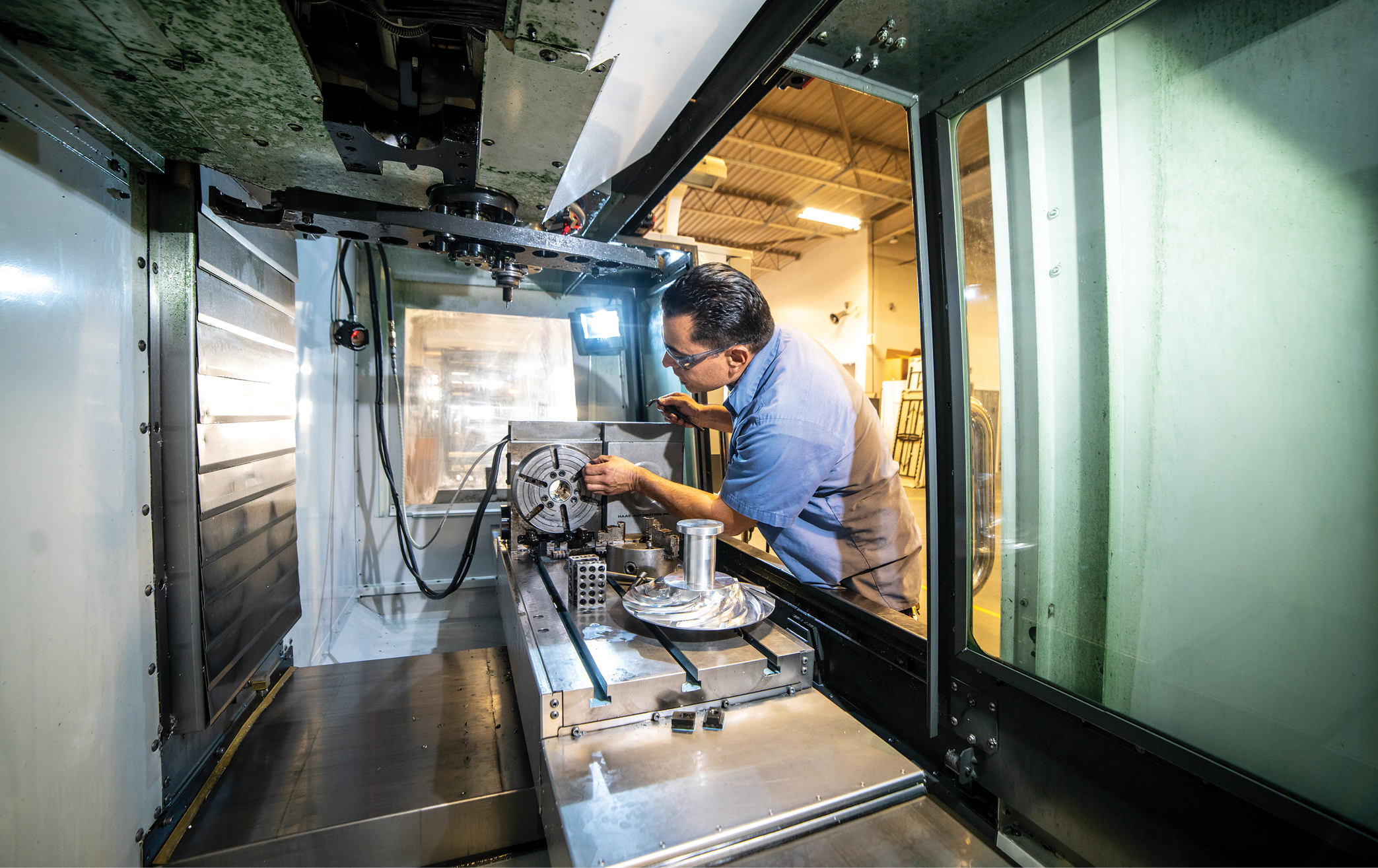Off The Grid Brewery is a 10-year-old family-owned business based at the heart of Southern California in San Bernardino County, that had long been able to meet its hiring needs on its own. However, as the company grew, finding employees with the skillsets needed to operate within a specialized brewery environment became more difficult.
“Brewing is a lot of chemistry, physics, biology. Finding someone with the skills that we need can be very, very expensive,” said Vice President Mike Schneider, who, along with his brother, started Off The Grid in the family garage.
Enter the San Bernardino County Workforce Development Board (WDB) and its On-The-Job Training (OJT) program. With WDB’s support, Off The Grid found its next head brewer while doubling its profits over the course of a year. Under OJT, WDB pays up to half the salary of a worker while they are being trained.

“Brewing is a lot of chemistry, physics, biology. Finding someone with the skills that we need can be very, very expensive.”
— Mike Schneider, Vice President, Off the Grid Brewing Co.
OJT is just one example of the WDB resources available to county businesses that take the stress and financial burden off the business owner. To that end, OJT has become one of the most sought-after business services the WDB offers. Approximately 150 businesses use the program each year.
“The Workforce Development Board is one piece of a forward-thinking system of workforce training and community college programs across San Bernardino County that are supporting regional employers, increasing the diversity of job opportunities, and exposing young people to new careers,” said San Bernardino County Board of Supervisors Chairman Curt Hagman.
“These training and skills development programs are just the economic development catalyst that is needed to encourage greater economic growth across the county,” he added.
Chaffey College Industrial Technical Learning Center (InTech), located in the city of Fontana in San Bernardino County, is a shining example of the effectiveness of these programs.
“With InTech we’re providing top-of-the-line facilities, equipment and technology, along with Chaffey College’s talented and dedicated staff and faculty in order to bring relevant, practical knowledge and experience to prepare students to meet the growing workforce needs in our community,” said Dr. Henry D. Shannon, superintendent/president of Chaffey College.
InTech’s training programs include welding; automation, robotics, and mechatronics (ARM) pre-apprenticeships; industrial, electrical and mechanical pre-apprenticeships; apprenticeships and other workforce skills training programs. All trainings are provided at no cost to participants.
For employers, the impact of this training is significant. Since opening in 2016, InTech has trained more than 2,000 students in its train-to-work programs, with an average 86% of students hired for employment. InTech’s registered apprenticeship programs, in partnership with employers, places individuals into jobs with an average starting wage of almost $24 an hour. Since 2016, more than 4,000 employees have been trained in these and other programs, such as leadership, safety, and computer skills, with 130 employers served.
In Tech Helps FabFitFun Find its Workforce
One of InTech’s employer partners is FabFitFun, a lifestyle membership that is best known for its flagship product, the FabFitFun box, which provides a selection of full-size products across beauty, fashion, fitness, wellness, home, and tech – delivered each season. On a quarterly basis, the boxes are fulfilled in a 600,000-square-foot San Bernardino County distribution center.
In 2019, FabFitFun’s Director of Engineering Diana Dreyer was building a maintenance team but struggled to find quality candidates in a very competitive market. She said the company was competing with fulfillment centers and manufacturers throughout the region. The company searched for trade schools in the area and discovered InTech Center.
The InTech team met with FabFitFun to assess their needs and required worker skillsets. Within days, Dreyer was provided with a list of candidates who were graduating from InTech’s industrial, electrical, and mechanical classes. The company hired four candidates.
“I sat in a class and met the teacher to understand how the classes are delivered, and I was extremely impressed. The technicians are well-trained and the facility is amazing,” Dreyer said.

Eric Schmidt is president of Exquadrum, an aerospace defense company that uses the resources of Victor Valley College and the High Desert Training Center.
Photo courtesy Exquadrum and San Bernardino County EDA
In addition to hiring from InTech’s pool of candidates for entry-level positions, InTech also provides in-depth training to FabFitFun senior-level technicians who average 30 plus years of experience in the field.
The success of vocational training programs such as InTech to support workforce demands is spreading throughout San Bernardino County.
Training the Next Generation of Rocket Scientists
Exquadrum is a company with extensive experience in both the commercial and defense aerospace communities with government customers that include the United States Air Force, the Missile Defense Agency, the Defense Threat Reduction Agency, and others. In 2021, the firm opened a new 66,000-square-foot headquarters in Victorville in San Bernardino County.
Committed to employing the best workforce in Southern California, Exquadrum CEO Kevin Mahaffy and his business partner, Exquadrum President Eric Schmidt, joined with Victor Valley College to support the growth of a new High Desert Training Center (HDTC) in the same facility as Exquadrum.
Victor Valley College runs the HDTC, which provides vocational training. Exquadrum and firms such as DeVoll Rubber, General Atomics, Mitsubishi Cement, Rio Tinto and Church & Dwight are among the local companies that use HDTC’s resources to source and train workers.
According to HDTC, companies in the area were having trouble filling existing positions and needed to upskill their workforce, providing an impetus to locate the vocational program in the area. When Exquadrum bought the building for their Victorville headquarters, the token rent agreement with HDTC remained in place and the engineering firm became one of the first cohorts of their training program.
As Mahaffy noted, there really is no official program that exists for a vocational program to train technicians in the aerospace industry because of the necessary specifications, certifications and regulations. A subset of that is the rocket industry, Exquadrum’s primary focus, that comes with even more stringent requirements.
“To source the right employees, we need to train them. Community college is a good start because it allows us to find folks who have a technician-focused career goal. We can steer them toward aerospace, which provides a good-paying job in an interesting industry. Our influence helps because it’s not something these young people would ever consider,” Schmidt said.
Over the next 10 years, Exquadrum will donate $2.5 million to HDTC to ensure they have cohorts in the basics of aerospace, including hydraulics, pneumatics, sensory technology, low-voltage pressure systems, and power systems.
More than Training a Workforce, Changing an Economy
How valuable is Exquadrum’s proactive role in regional training?
Consider a young man who Schmidt met driving a tow truck. The company invited him in to broaden his education. The young man not only excelled early on as a technician but became inspired by the opportunity. The first in his family to ever attend college, he began community college classes at night and eventually transferred to California State Polytechnic University, Pomona to pursue an engineering degree.
For Schmidt, that success is personal because he is also the first in his family to attend college and experienced the benefit first-hand, especially since neither of his parents graduated from high school.
“In this region, you have a significant base of vocational or blue-collar workers. If the parents are blue-collar workers, the probability of their children becoming blue collar workers is staggeringly high. That changes when you insert education and introduce a path these young people didn’t know existed,” Schmidt shared.
Programs such as InTech and HDTC create venues for students to explore the diversity of jobs gained through technical training programs. As Exquadrum’s leadership has seen, when students study to be a technician, they are already on a pre-engineering career pathway. Even if they don’t attend college, they are still going to have a great job and career.

A worker at Exquadrum in San Bernardino County, California.
Photo courtesy of Exquadrum and San Bernardino County EDA
FabFitFun’s leadership concurs. “Because of InTech, we’ve engaged high-level talented employees to make them even better. That’s never a bad thing, when you can offer high-quality training,” said FabFitFun’s Director of Human Resources Rick Remillard.
Remillard added that he gets calls from the home loan companies for employees who are ready to buy their first home for themselves and their family. “As they make that transition, they gain confidence, not just in terms of their self-worth, but it’s also the money that’s going into their pocket. And that’s a win for the community,” he said.
Regional workforce training also supports local hiring policies, as demonstrated by Exquadrum.
Exquadrum’s leadership confirms that when they hire people who have grown up in the community, the propensity for them to become long-term employees increases significantly.
That matters when you consider that it costs, in some cases, hundreds of thousands of dollars to train rocket engineers.
As Schmidt cited, there’s a huge gap between what you learn in college and what you can functionally do on day one versus day 720. That’s why it takes Exquadrum at least two years to train.
But it’s worth it according to Schmidt. “Our efforts to train, recruit, and hire locally have paid dividends because these employees become extraordinary,” Schmidt said.
Similar to InTech and HDTC’s ability to teach new skills to a new generation, the OJT program can bridge the skills gap for new and existing employees in unique ways as well.
“The OJT program helped us bring in people who lacked the experience we need and train them without having to take on the big expense,” Schneider says. “It really takes the stress and financial burden off the business owner.”
“The Workforce Development team’s efforts, under the leadership of the San Bernardino County Board of Supervisors, are creating tangible results toward the achievement of the Countywide Vision,” said County Chief Executive Officer Leonard X. Hernandez. “Specifically, we are making our county a place where residents can prosper, and where innovative, high-quality employers are welcome.”
